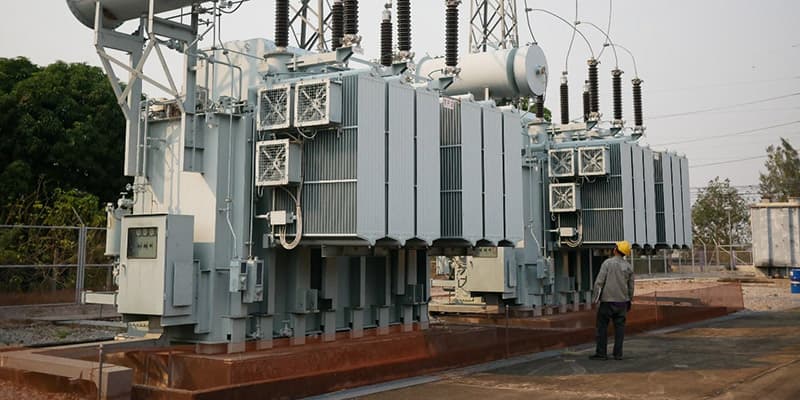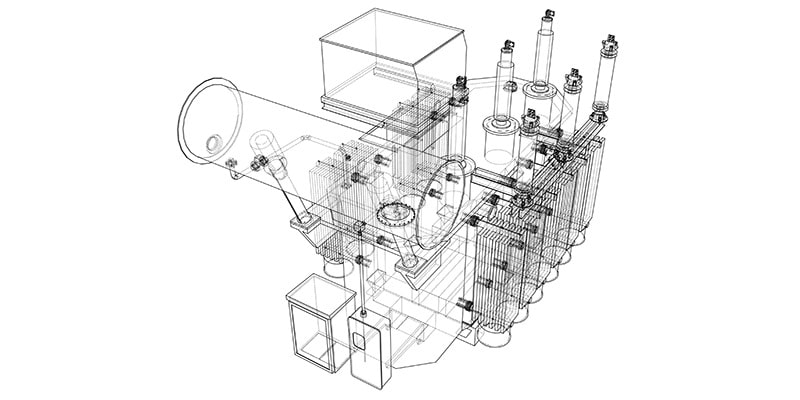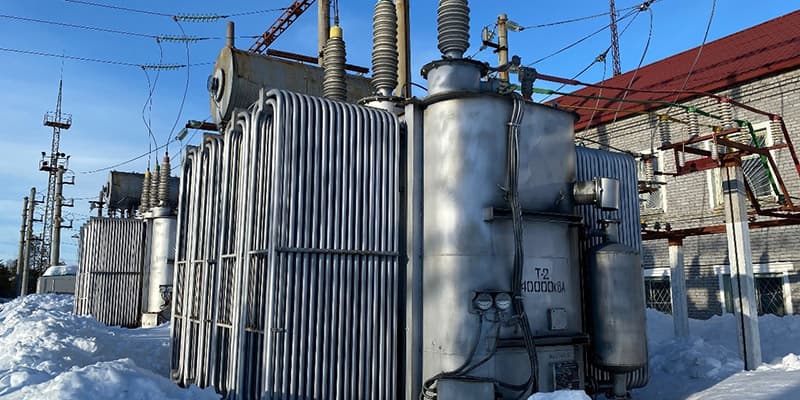Reuse the Steel Core in Your Substation Transformer
The core is one of a transformer’s main power transfer components. A static device, the core does not generate electrical power but transfers it from one AC circuit to another. When a transformer is well monitored and maintained, its core should provide consistent service for a lifetime and more.
How many more years? Because you can reuse a steel core as part of the remanufactured transformer, your transformer’s core should last an additional 25 years. Here’s what you need to know to save time and money by reusing the steel core in your substation transformer.
Substation Transformer Design
A transformer’s basic design properties have not changed since the days of George Westinghouse and Thomas Edison. By winding independent coils of copper wire around a steel core so they’re near but not touching each other, a magnetic field from the first coil affects the second.
To oversimplify, the amount of copper wire in both the primary and secondary coils enables the transformer to “step up” or “step down” voltage for electricity supply. That’s been true for 150 years or more, and the principle is similar for transformers ranging from those in welding machines to your oil-cooled substation transformer. Transformer manufacturing, however, has changed.
Materials and Market Conditions
The development of cold-rolled, grain-oriented (CRGO) steel in the late 1930s allowed engineers and manufacturers to make transformers more efficient and more durable than those made with non-grain-oriented steel. By the 1960s, most transformers in North America used CRGO steel. Designed by engineers using slide rules instead of desktop computers, transformers from this era were most often overbuilt and engineered to last. Many of those transformers remain in use today, but when they do fail, Jordan Transformer’s experienced design engineers can optimize the use of the additional space and renew the life of the transformer.
Too often, they’re being replaced by newer transformers designed to meet modern specifications that might be optimized as much by cost savings as by life span; they’re designed to win lowest-cost bids. Manufacturers utilize the availability of modern computing power to shave every bit of excess margin out of their designs, resulting in the materials being pushed to their limits.
Costs for New and Remanufactured Transformers
A manufacturer of three-phase substation transformers rated at 30 MVA could demand a price of more than $1 million. And that will vary due to several factors today, including commodity prices and shipping costs. Right now, many manufacturers are battling supply chain issues and increased demand so the lead time for a new transformer has grown dramatically and in several cases may not even be able to obtain future production slots.
While the trend in many consumer goods, including electronics and motor vehicles, is to buy new, the trend is back for remanufacturing an older transformer saving you time and money in the short-term and long-term.
Cost to remanufacture a transformer’s core and coils varies depending on size and condition of a transformer. Most often in remanufacturing, we determine that rewinding the transformer is all that’s necessary; we don’t typically need to replace core steel. In these cases, our skilled winders complete the work, then verify it during final factory testing so the transformer has the same no-load losses as it was originally built. This testing includes measuring the losses the windings generate when energized.
All transformers are designed in accordance with the latest revision of IEEE Std C57.12.00™ and tested in accordance with the latest revision of IEEE Std C57.12.90™.
Comparing the cost of remanufacturing a transformer to the alternative of a new transformer is seldom an apples-to-apples comparison. Designed for cost-saving specifications, most new transformers use less copper and less oil than we often use when remanufacturing an existing transformer which was engineered to last. Reusing the core, plus the top and bottom steel frames, will save you time and money on the front end. There’s a very high probability you will reuse the steel tank for additional time and money savings. Your redesigned and remanufactured transformer will likely outperform most new transformers in every way including longevity.
.png?width=295&height=96&name=Untitled%20design%20(8).png)





